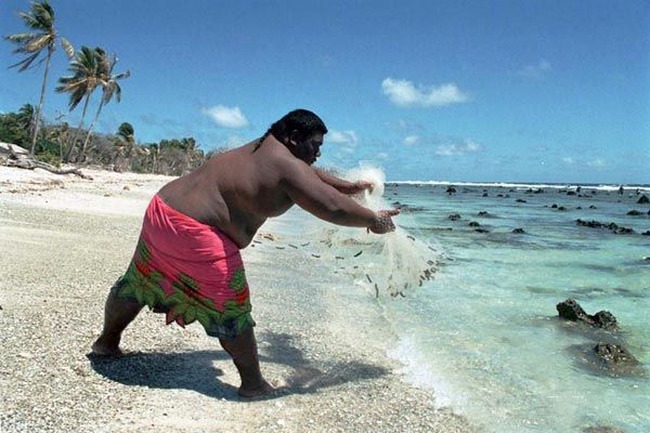Yuki, JH1NBN will be active again from Nauru 18 - 28 February 2015 as C21BN.
He will operate on 80 - 10m SSB.
QSL via home call.
Nauru. Information about country.
Nauru, officially Republic of Nauru, formerly known as Pleasant Island, is country in South Pacific Ocean.
Motto- Gods Will shall be First.
Capital- Yaren.
Official languages- Nauruan, English.
Independce day- 31 January 1968.
Currency- Australian dollar (AUD).
Time- UTC +12.
International phone code- +674.
Internet domain- .nr
Nauru divided into 14 districts.
National flower- Calophyllum.
National bird- Frigatebird.
C21BN Nauru. Information for Radio Amateurs.
Amateur Radio prefix- C2.
DXCC country- Nauru C2.
WAC continent- Oceania.
WAZ zone- CQ 31.
ITU zone- 65.
QTH locator- RI39.
RSGB IOTA reference- IOTA OC-031.
Visit the Green Island Cliffs of Nauru
The tiny island of Nauru was once known as Pleasant Island, and it was home to some of the world’s richest people. The phosphates found naturally on the island supplied the nation of Australia with fertilizer for almost a hundred years, until 2000. Since then, however, the island’s future seems more uncertain.
The people who live here are tough. There are infrequent freight deliveries and the unemployment rate is high. It is also difficult to gain access to the island, but the charm and quiet are enough to lure some tourists this way.
Glimpses of Greatness
The quiet island still does offer glimpses of the former pleasant way of life. You can view the wild ocean and the sea birds that dip and swoop over the lovely green cliffs. If you are interested in history, you can view remnants of the WWII occupation by Japan. The mining infrastructure’s skeletal remains are also quite visible.

Take a Closer Look at the Island
Nauru is eight square miles and is found in the southwestern area of the Pacific Ocean. A lovely coral reef surrounds the island, and you can view it from shore at low tide. The reef is dotted with splendid pinnacles. The reef prevents a local seaport, although smaller boats can access the island.
Cliffs of coral surround the central plateau of the island nation. Command Ridge is the high point of this plateau, and it is 233 feet above sea level. There is only a small fertile area along the coastal belt, and coconut palms do flourish there. Likewise, the land that surrounds Buada Lagoon is home to plants like pineapples, bananas, and the indigenous tomano tree.
The other two great phosphate rock-formed islands found in the Pacific Ocean are Makatea, found in French Polynesia, and Banaba, located in Kiribati. There are few phosphate reserves remaining on the Nauruan island, and jagged limestone pinnacles of up to 50 feet in height dot the barren terrain. Mining devastated and stripped much of the island’s land area, and it killed off about 40% of the local marine life.
Historical Museum Visits
The once-prosperous phosphate industry built the Military Museum on the island. It is not always open to tourists, but its collection includes WWII artifacts such as Japanese bombs, machine guns, and rifles. Also displayed are a Japanese 75mm mountain gun, along with bullets and ammunition used in WWII.

The Island Climate
The climate of Nauru is hot and humid year-round. This is because it is located in close proximity to the equator. Monsoon rains in the months between November and February fill the rooftop storage tanks of the islanders. There is also a desalination plant for fresh water. Cyclones do not often disturb the island. The rainfall varies from one year to the next, as it is highly influenced bythe weather pattern we know as El Niño. The temperature of the island ranges between 79F and 95F during daytime hours and “falls” to 72F to 93F overnight.
Video Nauru

